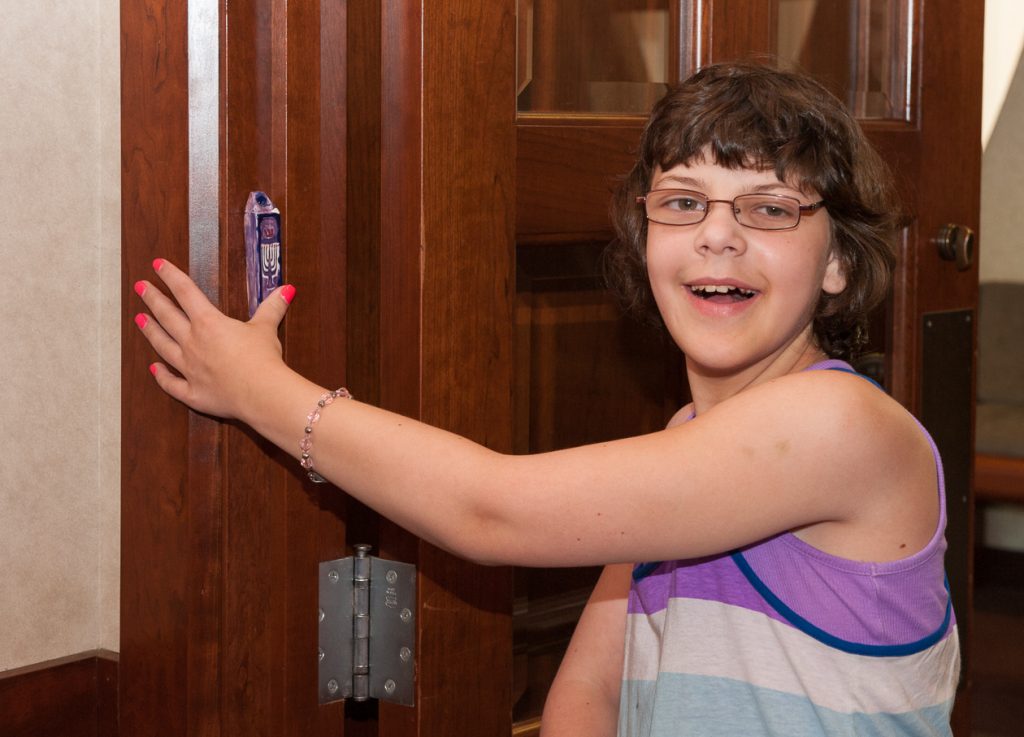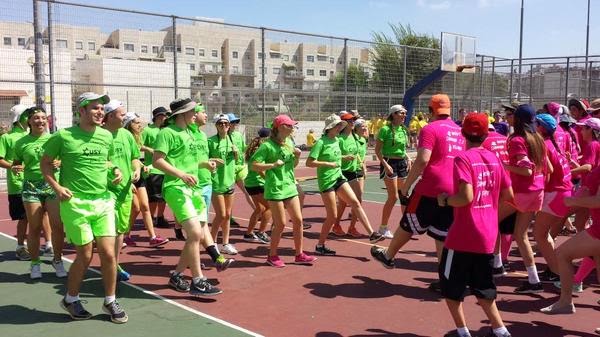Last week, in the middle of meetings and conference calls
and tense conversations about the suddenly serious situation in Israel, which
seems to have uncorked the genie of anti-Semitism from a bottle buried deep
before the surface of the Earth, I found myself thinking, inexplicably, of a
movie I had seen just last year: 42 -- The Jackie Robinson Story.
What does Jackie Robinson have to do with the world stage
right now? Well, more than might be immediately apparent but there was one
scene, one piece of dialogue from this fine film that has been repeating in a
loop in my mind.
It took place between Branch Rickey, the MLB executive who
broke the color barrier by signing Robinson to the Brooklyn Dodgers and
shortstop Pee Wee Reese, played by Lucas Black, prior to their Cleveland game in
1942. Face to face with hatred, the
quote-worthy Rickey (he also famously said, "It is not the honor that you take with you, but the
heritage you leave behind” and “Luck is the residue of design”) turned
to Reese to state:
“The world’s not so simple now. I guess it never was. We
ignored it. Now we can’t.”
Almost overnight, our secure lives have been utterly upended
by the bracing realization that the world we deemed simple (that is, safe and
sane) is no longer either. With the blink of an eye, we note our prior blindness
to warning signs we had ignored.
And like Branch Rickey, we realize that it is too late to go
back to our previous state of blissful ignorance.
We have been blissful indeed, those of us lucky enough to
have been born Jews in the second half of the 20th Century in North
America. We have walked the streets of our big cities and small towns without a
shred of fear, without shame, without self-consciousness, draping ourselves in
our distinctiveness, proudly Jewish.
We have built edifices to our enduring presence – schools,
synagogues, community centers, non-profit organizations and more, many of them
bearing overtly Jewish names, others bearing stars of David, Hebrew lettering,
markers of our heritage.
 |
New York Stands With Israel -
rally outside the UN on July 28, 2014 |
We have danced in the streets with Torahs and rallied
outside of the United Nations with signs and placards. We have made demands of
our elected officials from a particularly Jewish platform. We have felt
emboldened and entitled.
In a Europe chastened by the Shoah, we have had permission
to rebuild Jewish communities, seeing the seeds of seventy years of replanting
now. Around the world, we marvel at the variety of Jewish communities in places
both expected and off the beaten track.
And we have stood tall because of the might and strategy and
moral grandeur of the IDF. Seeing our “boys” and “girls” in uniform on buses in
Israel, we felt a swelling of pride within our breast. We have had iconic
generals and presidents and prime ministers. We have legitimate modern day
heroes. As a result, we are the lucky inheritors of the blessing of security.
We have Israel now. We can plan a Jewish future uninterrupted by the predictable
cycle of Golden Age-Persecution-Destruction that has characterized the Diaspora
since its very beginning.
We have felt exceptional, we who were the Greatest
Generation of North American Jews.
We have even had the happy chutzpah to question the
necessity of Tisha B’Av in recent years. Many an Eicha service has featured a
communal conversation on how we deal with the lamentation of destruction when
our beloved Jerusalem has been returned to us, whole and unthreatened, when we
are living the dream of the return to Zion, the miracle of being a free nation
in a free land.
Not a century after the flames of the crematoria have died
down, we are witnessing the rekindling of an age-old hatred. Sparked by
Israel’s defensive campaign against the homicidal/suicidal terrorist
organization, Hamas, it is suddenly open season on Jews.
Despite assertions that anti-Zionism is a political
learning, hardly synonymous with anti-Semitism, we are seeing abundant proof to
the contrary.
I hardly have to repeat the litany of shocking rallies,
attacks and incidents of violence – in deeds and words – over the past few
weeks. Every day brings with it a new feeling of devastation and betrayal.
Swastikas are all the rage now, adorning signs. Salutes to Hitler, Nazi ideology
and Jewish genocide have come out of the ground -- reanimated, the undead --
creatures from a science fiction horror film.
Fear and panic have replaced our carefree summer
sensibilities. We fear for Israel, we fear for ourselves, dispersed in
comfortable communities throughout the world.
For those of us who have considered ourselves liberals,
humanitarian, promoters of coexistence, citizens of the world and
universalists, the creeping realization that the right has been right all along
has entered our consciousness.
It seems a terrible thought. Everything we had scoffed at
previously appears downright prophetic. All those rabid talking heads on particular
networks suddenly appear to us like friends we desperately need.
For those of us who occupy the middle path, we try on the
mantle of that new way of thinking and it hurts our heads and hearts.
So we resist that rightward swing, knowing that while the
diagnosis might be correct – yes, Israel and the Jews are being isolated by the
world, alone, singled out, held to a double standard, vilified, targeted -- the
prescription offered by that worldview does not fit. The world simply cannot be
as polarized as those on the right portray it. Proactive action is required. An
alarm must be sounded. Partners must be found. Collaborations between people of
conscience must be forged.
The religious heart seeks change, repentance growth. The
religious heart is open, not closed. When your heart hardens, you become a Pharaoh.
Protecting ourselves from extremist hatred, we cannot
capitulate to an extremism of another sort.
"Good deeds
are such that are equal-balanced, maintaining the mean between equally bad
extremes," states Maimonides in his treatise, Concerning the Cure of the Disease of the Soul.
Never in my
lifetime has the approach of Tisha B’Av felt more appropriate, more necessary.
Never before have I envisioned the devastation depicted in the Book of
Lamentations as vividly for we have just entered history. We feel fear for the
very first time in our happy, heedless lives; we see that we are not that
different from previous generations of Jews, after all.
Yet never before
have we needed balance more. Let us resist the extremism of people who feel
threatened; let us believe in coexistence, collaboration and bridge building, but
not in an ignorant and simple way. Let
us talk. Let us tell our stories and our truth. Let us learn from history. Let
us defend ourselves but also, let us hope and dream.
As we approach
the Nine Days that culminate in the traditional day of mourning for our
shattered Temple in Jerusalem so many centuries ago, may we recall the
necessity of understanding the complexity of the world, the folly of extremism
and the eternal, enduring power of the Jewish People.







